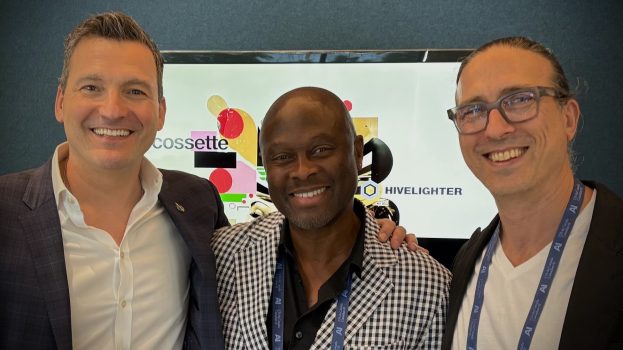Welcome to New York. It’s a giant ad canvas and Madison Avenue is chock-full of mascots.
Advertising Week New York kicked off its 10th anniversary edition with a look back and a look ahead. As a busload of iconic ad mascots paraded around Times Square, tech expert Shelly Palmer took centre stage to tell us that we only have the smallest inkling of how different the future of advertising is going to be.
Speaking on the topic of the “Connected World,” Palmer prefaced his remarks by saying, “we feel like tomorrow is going to be like today, I’m here to tell you tomorrow is going to be nothing like today.”
Given how fast the base of smart device-enabled consumers continues to multiply, Palmer posited that radical changes to the home, workplace and marketplace will continue to escalate due to our mobile connectedness, and Google Glass is just the tip of the iceberg.
Some background: Palmer says we don’t notice exponentials when they’re small numbers – one, two, four, eight, 16 – but the further along you go, you begin to get insane growth. He points out that the history of mankind is measured by our tools: 250,000 years of the Stone Age, 8,000 years of the Bronze Age, 3,500 years of the Iron Age, 253 years of the Industrial Age. The Information Age is 42 this year. Get the idea? And just now we are beginning to see how the internet of things, and one-screen behaviour will change the way things work.
As an example, Palmer cites Samsung’s Goldilocks screen size strategy – it has one of every variety and doesn’t care what size you buy. This leads to the consumer not distinguishing between the activities performed on a really large phone over a really small tablet, or TV screen.
This is a change that Palmer says conflicts with the current ad biz model: “how can we have separate mobile and TV buyers when there’s only one screen?”
And on the retail front, once businesses like Diapers.com hits 30% of the consumer base it changes everything – those parents will not be crossing the threshold of a lot of retailers, and that will impact a chain of purchase decisions.
Palmer points to a variety of ways that we’re making life easier – wireless door keys, personal fitness apps and self-checkout at retail – and says that what all of this does, from the connected house that handles security, to the connected TV, is create an audience that is a self-assembling cohort through their tools.
Citing wearable tech from Samsung’s gear to Google’s glass, Palmer says this is the beginning of the enhanced human. “What is to come is miraculous. We’re at the very baby beginnings of where we’re going.”
He also warned about the dark side, saying that if marketers don’t separate out this cohort and approach with appropriate content and caution, privacy will kick in if the brand interjections are “deemed too creepy and will get thrown out with the baby in the bathwater.”
Given that many brands face the future with a mix of nostalgia and fear tempered with determined plucky optimism, it’s not surprising that many themes run through Ad Week.
The sessions ranged from the visual revolution’s impact on media and advertising (everyone’s hoping for consumer sharing and going lo-fi to look native), to the complete re-imagining of your entertainment hub by the soon-to-launch Xbox One (a Kinect-controlled environment replete with Skype that claims to open a whole new level of personalization and engagement), and the launch of MEC Momentum, a way to anticipate, plot and plan how to turn brand bias into purchase action.
Whew. And that was just a smattering of the first half of day one.
























